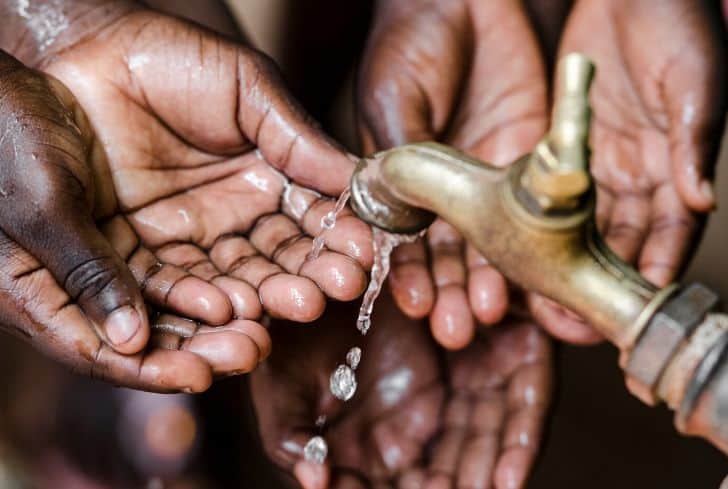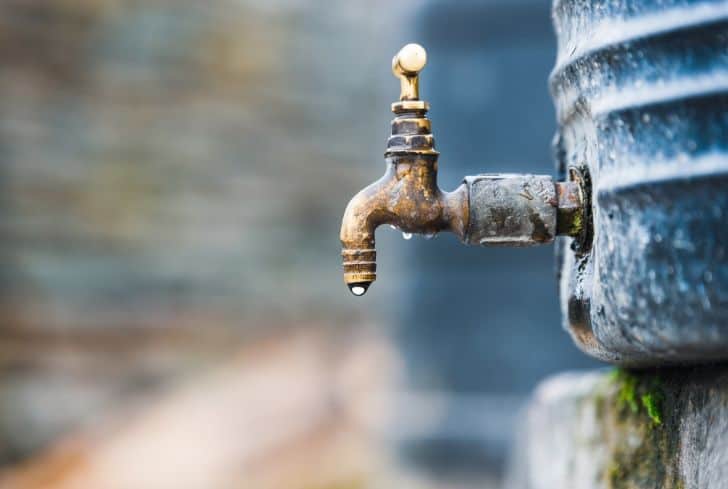Water scarcity involves water crisis, water shortage, water deficit, or water stress. Water scarcity can be categorized as either;
- Physical
- Economic
Physical water scarcity refers to a situation where natural water resources are unable to meet a region’s demand, while economic water scarcity is a result of poor water management resources.
There are millions of people all over the world who don’t have access to water, or if they do, that water cannot be used. About 71% of the earth’s surface is covered with water, and 3% of it is actually freshwater that is fit for human consumption. And unfortunately, over two-thirds of the 3% is tucked in frozen glaciers and unavailable for our use.
Clean drinking water is scarce, and there are millions of people across the globe who spend their entire day searching for it. Yet, people with access to safe, clean drinking water take it for granted and don’t use it wisely.
According to WWF, some 1.1 billion people worldwide lack access to water, and a total of 2.7 billion find water scarcity for at least one month of the year.
That being said, what are the causes of water scarcity, what are the effects of water scarcity, and are there any solutions that we can start to explore?
Well, here’s a quick look at all of those things in a bit more detail.
Children of a culture born in a water-rich environment, we have never really learned how important water is to us. We understand it, but we do not respect it.
~ William Ashworth
According to Wikipedia,
“Water scarcity is the lack of sufficient available water resources to meet the demands of water usage within a region. It already affects every continent and around 2.8 billion people worldwide at least one month out of every year. More than 1.2 billion people lack access to clean drinking water.”
Causes of Water Scarcity
1. Overuse of Water
Water overuse is a huge issue that many people are doing. It may be overused on people, animals, land, or other things. It may also be used for recreational activities with no care about the effects that it may have on the world around them.
2. Pollution of Water
Water pollution is a tremendous problem, especially when looking at areas that don’t necessarily have a good sewage system.
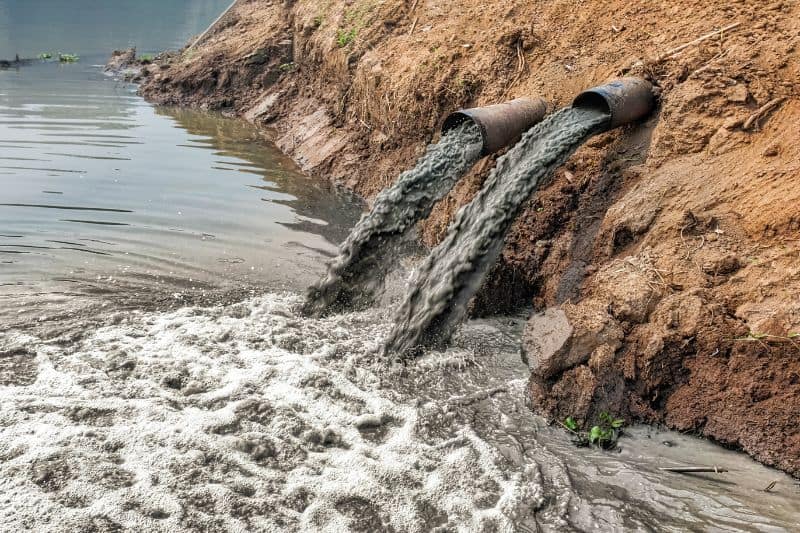
Pollution can be anything from oil to carcasses to chemicals and fecal matter. No matter what it is, it contaminates the water, making it unsafe for people who could otherwise be using it.
3. Conflict
If there is conflict over an area of land, it may be difficult to access the water located there. Plus, conflict may erupt into violence, causing the destruction of important local infrastructure that may affect the water supply for many people.
In the worst-case scenarios, people could end up dying if they try to access the water in these areas (due to violence). This can cause a variety of other issues, including pollution, which we discussed in the previous point.
4. Distance
There are several remote areas throughout the entire world that deal with water scarcity because they just aren’t close to anywhere that has water. Areas considered deserts or those secluded may not have some sources where the people living in them can get water effectively.
5. Drought
A drought is, in short, an area that is especially hot and dry, which is not getting enough rainfall to be able to sustain the life that is residing there. Some areas are in a perpetual drought, while others experience occasional drought.
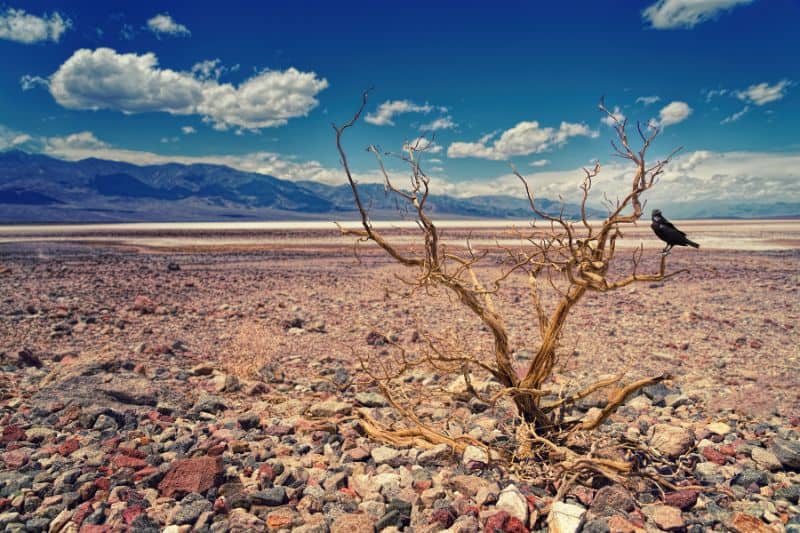
Droughts are common all over the world and may severely lower the groundwater level making it impossible for people to get water from fountains. Unfortunately, there’s little that can be done to prevent such things from happening.
6. Governmental Access
In some countries, specifically those with dictatorships, the use of water may be strictly controlled by those in power, causing a scarcity for those who may be located in such areas of the world. These governments use it as a source of control over those they govern, which can be an enormous problem.
7. Global Warming
Global warming is another cause of water scarcity. When our average air temperature becomes warmer, water from rivers and lakes evaporates faster, which may contribute to the drying up of water bodies.
Therefore, people who rely on those water bodies for drinking water significantly suffer from the consequences of global warming, affecting the local water supply.
8. Illegal dumping
Illegal dumping is another significant reason for water shortages. Industries frequently dispose of their industrial garbage in nearby rivers and lakes as an easy and cheap way to eliminate this waste.
Unfortunately, doing this leads to serious water pollution, which may result in severe water scarcity for people who rely on those water bodies for the water supply.
9. Groundwater Pollution
Soil pollution or illegal dumping can also cause groundwater pollution as harmful substances get washed through the soil into groundwater during rainfall. Locals who rely on clean groundwater suffer from severe levels of water scarcity if there is no alternative water supply in place.
10. Natural Disasters
Natural disasters like tsunamis and floods may also cause severe water shortages for the local population since important public infrastructure may be destroyed. The natural disaster may even collapse the local water supply in severe cases.
Additionally, floods lead to serious pollution of local water bodies as large amounts of soil are moved, and after floods, local rivers may no longer be suitable for drinking water purposes for a certain period of time.
Disastrous Effects of Water Scarcity
1. Lack of Access to Drinking Water
The biggest problem when you have water scarcity is that people cannot get fresh, clean drinking water. The human body can hardly survive so long without water, and a lack of drinking water can result in a number of other problems, which we discuss below.
2. Hunger
If there is no water that can be used to help water the crops, then you are going to have people that are going hungry. Animals will also die, which will result in a lack of animal products as well. Water scarcity, in short, causes starvation to occur en masse for both people and animals that are located in the area.
3. Lack of Education
Water scarcity makes it difficult for people to get the education they need or deserve. Why? Mainly because those children are either too sick to go to school (which we will discuss below) or they are working to help get water to the home and the family.
4. Diseases
If you don’t have clean water access, you will be more likely to get diseases from the available water. Whether drinking it or using it for bathing, there are so many ways of contracting water-borne diseases.
Even worse, when contraction happens to one or a few people, the number of those infected can proliferate in no time as most waterborne diseases are highly contagious. In severe cases, these diseases may cause loss of lives and even spread across borders, leading to pandemics.
5. Sanitation Issues
We need water for several quotidian tasks. Hence, lack of access to clean water for drinking, cooking, washing, or bathing can result in unhygienic conditions for people.
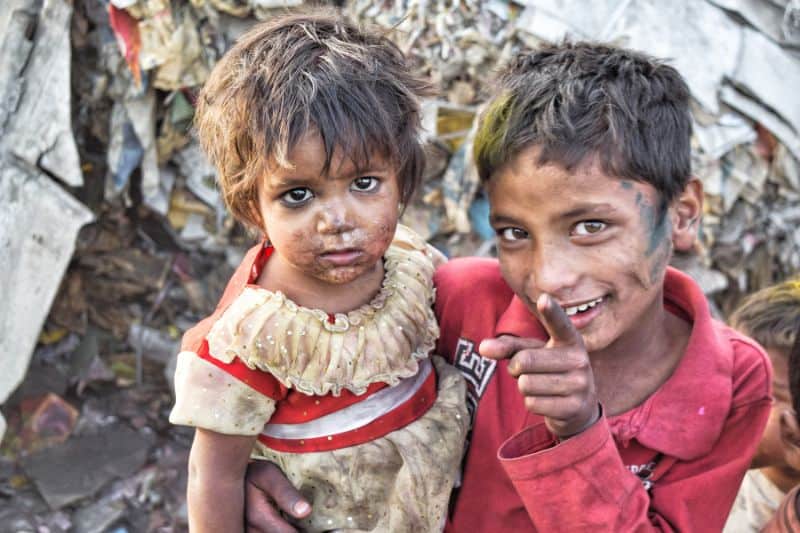
When people are not given access to proper sanitation, diseases become much more of an issue than they’d have been otherwise. It also causes mental health issues, including depression and anxiety.
6. Poverty
All in all, people dealing with water scarcity are often stuck in poverty as well. These people are not able to get the resources they need to thrive and instead are barely surviving through these difficult times.
7. Migration
Water scarcity may also lead to migration waves. When large areas of land are no longer suitable for living or farming because of water scarcity, millions of people may lose their livelihood. To avoid that, these people may be forced to migrate to other places to survive.
8. Destruction of Habitats
Water is crucial for all life forms on our planet. If water scarcity persists over a longer period, it may also lead to the destruction of whole habitats. Animals and plants may no longer be able to get enough water and may therefore die or have to move to other regions.
10. Loss of Biodiversity
If regions suffer from severe water shortages, some animals may become extinct from death caused by thirst. Many plants may no longer be able to grow and reproduce sufficiently, causing serious biodiversity loss.
Amazing Solutions to Water Scarcity
1. Save Water Whenever Possible
This could mean limiting water use, minimizing the use of washing machines, and taking quick showers instead of prolonged baths. Even if you are on vacation in countries where water isn’t scarce, try to save water and convince your family and friends to do it. Save it whenever and wherever possible.
2. Education
There are plenty of opportunities out there that people can use to learn more about the world around them. By educating those who are not dealing with water scarcity, they can be in a position to help. Those dealing with it can be educated on how to prevent the problem from worsening in the future.
3. Recycle Water
There are plenty of technologies available that allow you to recycle rainwater and other water that you may be using in your home. Consider learning about how you can recycle water. Not only does it help to prevent scarcity, but it can also save you some money.
4. Advanced Technology Related to Water Conservation
There have been a lot of water conservation efforts deployed around the world, but a lot still needs to be done to ensure that the rest of the world can conserve water. Putting money and effort into conservation could be life-saving.
5. Improve Practices Related to Farming
Farming and irrigation are often huge culprits when it comes to water scarcity. Because of that, we need to improve practices so that we don’t use as much water and to ensure that those using it are utilizing it to its fullest potential. Technology also needs to advance in this manner.
6. Less Use of Chemicals in Farming
At present, excessive levels of chemical fertilizers and pesticides are used to maximize crop yields. However, it leads to serious soil pollution, which eventually causes groundwater pollution and contributes to the water scarcity issue.
It is crucial that farmers reduce the use of chemicals for farming to ensure clean water and reduce the water shortage problem.
7. Improve Sewage Systems
Clean drinking water starts with a good sewage system. Without proper sanitation, the water in an area becomes ridden with disease and any number of other problems. By improving the sewage systems in these areas, we can prevent water scarcity from becoming any worse.
8. Better Water Distribution Infrastructure
Many people worldwide, especially in poor developing countries, are still not connected to the public water infrastructure. These people often rely solely on fountains to meet their water demand, which may not work in droughts.
These people are at high risk of suffering from severe water shortages. By connecting these people to the public water supply, the water scarcity risk could be greatly reduced.
9. Support Clean Water Initiatives
There are organizations located all over the world that are looking to bring clean water to areas that don’t have it. Consider donating to these organizations with your time, skills, or finances.

So, as you can see, we need to consider many things when looking at water scarcity and how we can deal with it.
If we start to look at this issue as a whole and work hard to make a difference on this widespread issue, we’ll be in a much better place to help people worldwide prevent this issue from getting worse.
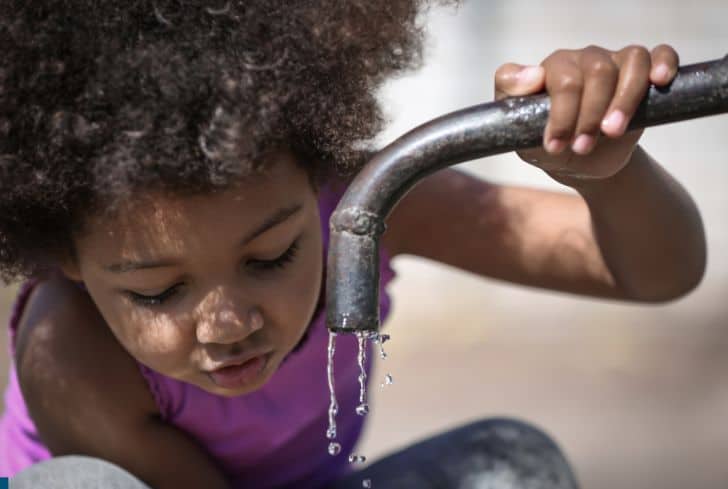
10 Countries With Acute Water Scarcity
1. Lebanon
Over 71% of Lebanon’s population had severe water shortages, according to a UNICEF report from the previous summer. The Middle East’s continuous drought, Lebanon’s economic problems, and the nation’s badly managed water systems have all since worsened the issue.
Price hikes and increased difficulty in obtaining water are both results of the economic crisis. The effects of this water shortage are most severe on the most vulnerable citizens, particularly Lebanon’s sizable refugee populations, who lack consistent access to basic sanitation services.
2. Pakistan
According to a recent analysis from the International Monetary Fund, Pakistan is the third most water-stressed country in the world, while WRI rates Lebanon third for water shortage.
The country may experience complete water scarcity by 2025, turning from a “water-stressed” country to a “water-scarce” country, according to the United Nations Development Program and the Pakistan Council of Research in Water Resources. Pakistan has long struggled with water availability, especially in the previous 35 years.
Although rural areas of the country also consume huge amounts of water for agriculture, the majority of which is irrigated by inexpensive canal systems, experts attribute this to the country’s rapid urbanization, climate change, and population growth.
3. Afghanistan
Since the country’s recent political upheaval and transition, which is just the most recent developments of a decades-long crisis fueled by conflict, instability, natural disasters, economic insecurity, and climate change, including the worst drought in the last 27 years, water has become even more scarce in Afghanistan.
According to a UNICEF report, 8 out of 10 Afghans consume contaminated water, and 93% of the country’s children reside in vulnerable and water-scarce areas.
4. Syria
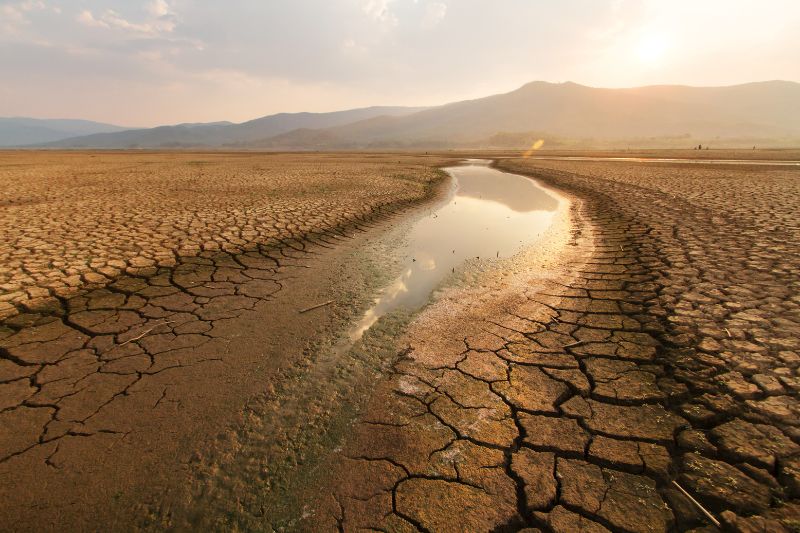
Due to low water levels in the Euphrates River, northern Syria faced its worst drought in nearly 70 years at the end of 2021. Weather-related climate change occurrences have been exacerbated by conflict for more than ten years.
According to the International Committee of the Red Cross, 98% of Syrians living in cities and 92% of those living in rural areas had reliable access to clean water before 2010, with barely 50% of the water and sanitation systems still operating, that has decreased by more than 40%.
5. Turkey
Turkey experienced severe water shortages in the summer of 2021, a side effect of the greatest heat wave in six decades, just like her neighbors, Lebanon and Syria.
According to the Yale School of the Environment, wildfires from the heatwave burned 770 square miles of land, and 65% of the nation is at risk of desertification.
Lower groundwater levels, which have been primarily caused by the climate crisis and ineffective water management practices, are combined with extreme drought conditions.
6. Burkina Faso
The dry season in Burkina Faso lasts from October to May. This means that the West African nation, which is landlocked and shares a northern border with the Sahara Desert, experiences dry weather most of the year.
Water scarcity in the nation’s northern Sahelian region has been worsened by conflict, making getting water a daylong endeavor. According to a report by Oxfam, access to water has decreased by 40% in some parts of the nation.
Infrastructure has had difficulty keeping up with the need for healthcare, clean water, and proper sanitation services in the host communities for internally displaced Burkinabés.
7. Niger
Due to the fact that Niger shares a border with Burkina Faso’s northeastern region and occupies the whole Sahel, the entire nation is at risk of desertification and drought.
There is a persistent lack of potable water in places like Tillabéri, which is primarily rural and experiences temperatures that often exceed 100 degrees Fahrenheit. Only 56% of Nigerien adults and 13% of children, according to UNICEF, have access to a source of clean drinking water.
Violence and insecurity make it challenging for specialists to analyze the situation and work with communities to identify workable solutions in the places that need assistance the most.
8. Nepal
Because of its numerous glaciers, rivers, springs, lakes, groundwater, and heavy rainfall, Nepal is home to 2.7% of the world’s freshwater, unlike many nations on this list.
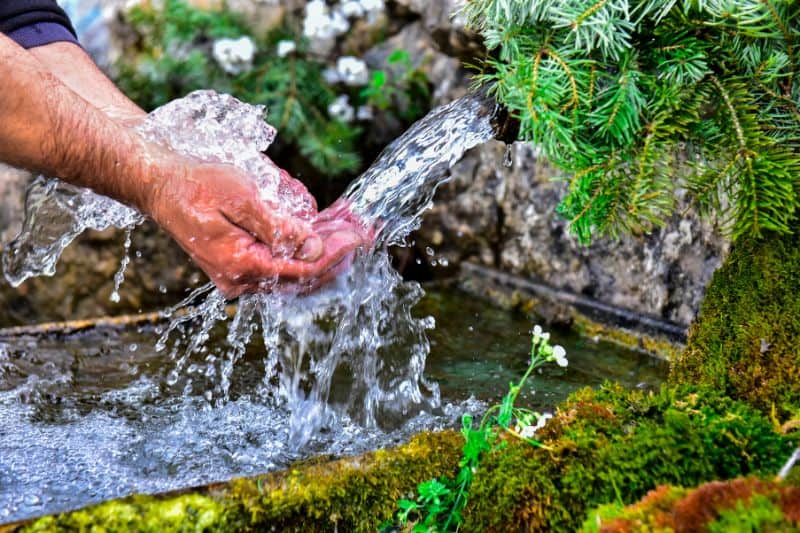
It is one of the nations with the highest water availability, just behind Brazil.
But it’s also a nation where, particularly in the last 20 years, water scarcity has reached a critical point.
Despite having several water sources, Nepal’s infrastructure and network are unable to keep up with supply or demand.
Less than 20% of the local water needs were satisfied in the Kathmandu metropolitan area in 2020. There are no clean rivers among the eight that run through Kathmandu.
9. Iraq
Nearly 3 out of 5 children in Iraq do not have access to safe water, according to this UNICEF report published in August of last year.
7 million Iraqis are now dealing with water scarcity and many of its knock-on effects because of the effects of the climatic crisis in the area and disagreements with neighboring nations.
This is particularly true for the approximately 300,000 refugees and over 1 million internally displaced Iraqis living in the country’s displacement camps, where access to water and sanitary facilities is even more scarce.
10. Sudan
The Republic of Sudan is located in a region of Northern Africa that experiences many of the same consequences of drought and climate change as the Middle East.
Since agriculture accounts for 80% of the country’s water use and provides 80% of Sudanese livelihoods, the country faces several dangers from increasingly constrained water supplies.
However, Sudan has become even more desertified due to these extensive farming activities. With Ethiopia and Egypt sharing groundwater resources across borders, there are extra diplomatic tensions surrounding water use.
Civilians in Sudan bear the ultimate cost: More than 40% of households cannot access basic water utilities. Furthermore, just 67% of the population has access to even the most basic sanitary facilities.
